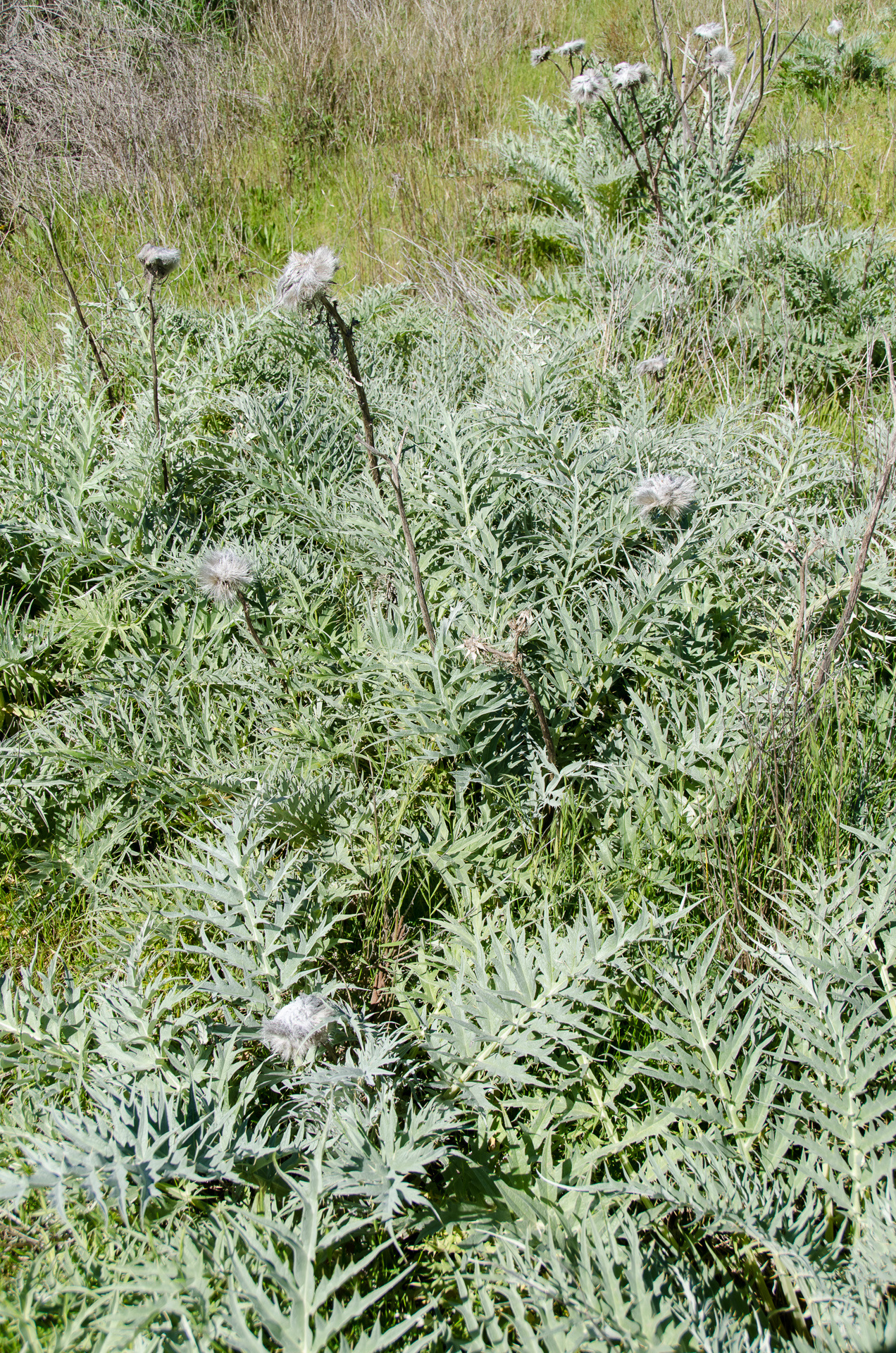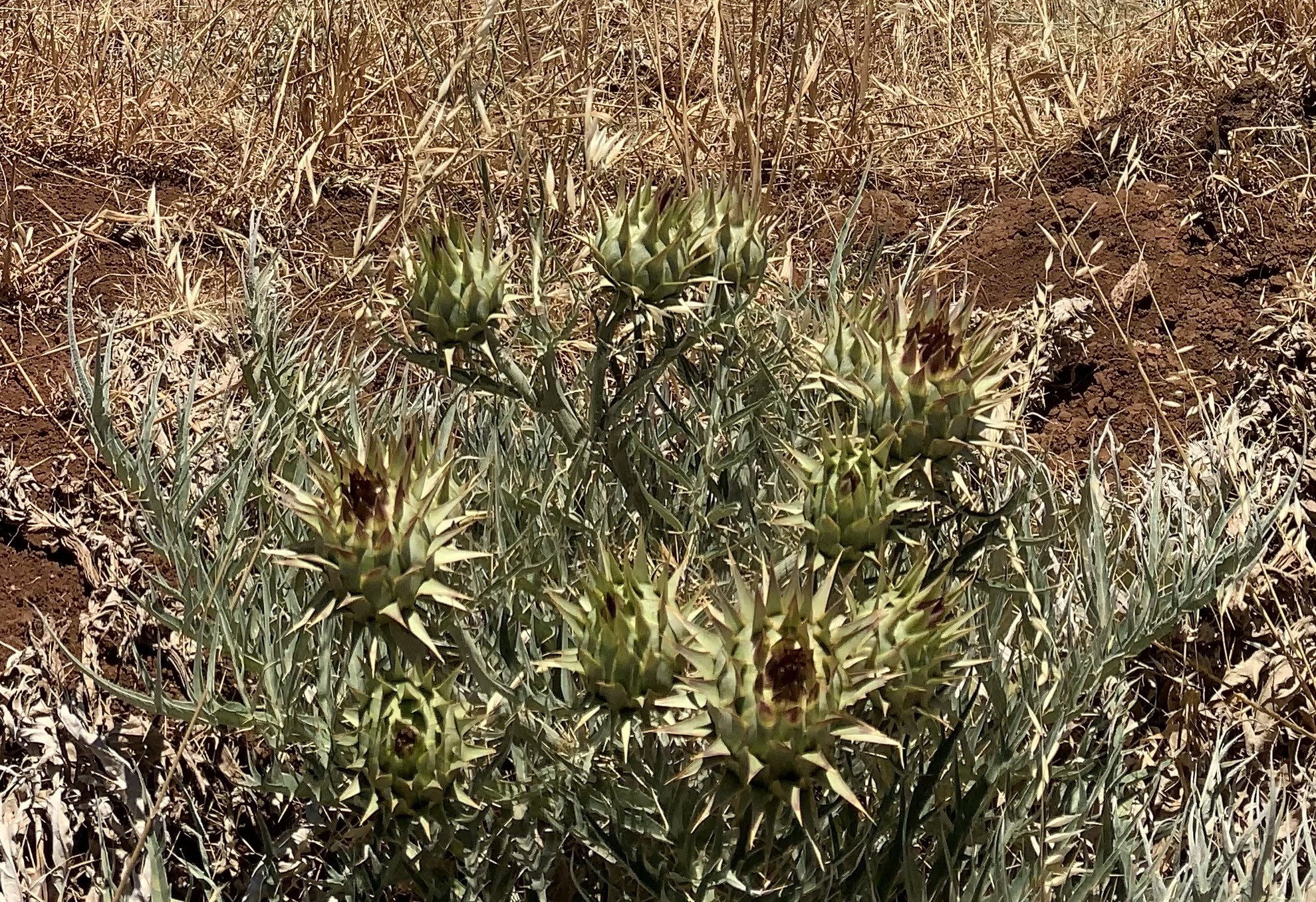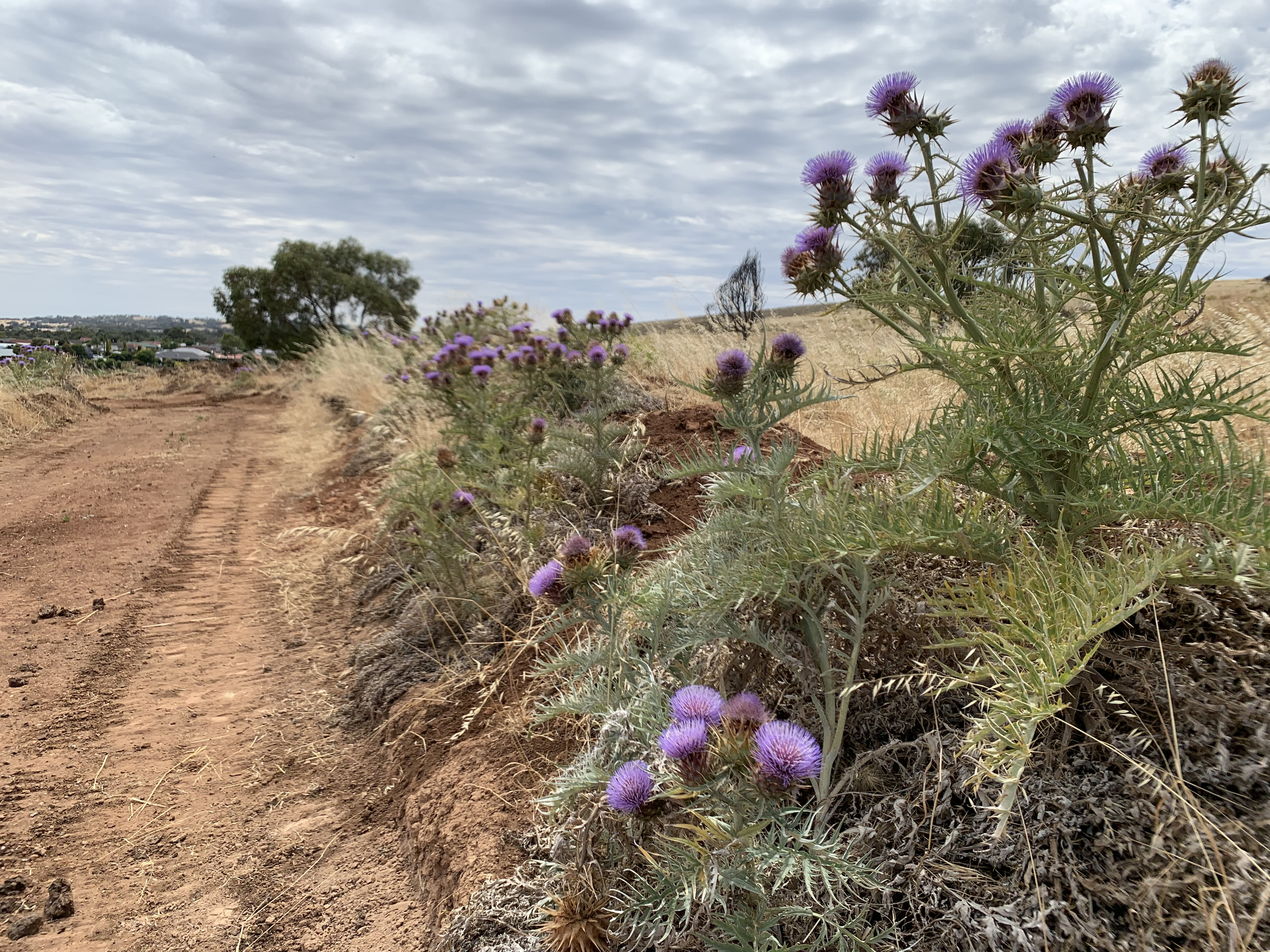Wild artichoke thistle is an invasive long-lived spiny weed that establishes high density populations in pasture and native grasslands.
Description
Wild artichoke produces annual leaves and flowers from a perennial taproot which is large and fleshy.
Leaves mostly appear after autumn rains forming a rosette. Mature plants commonly grow up to 1.5 high and 1.6m wide. Leaves are deeply divided with long rigid spines and grow up to 90 cm long and 30 cm wide. The upper surface is greyish-green while the underside has a dense covering of fine white hairs.
Plants grow slowly over winter, then more rapidly in spring. Leaves start to die as the flower stems emerge in October. The stems are ribbed and spiny with smaller leaves and can grow to 1.8 m high.
Flowering takes place from November to February. Flowers are blue to purple and approximately 10 cm across. The flowers are enclosed by tough spiny bracts. Plants typically have several flower heads each but can have up to 50. Each flower can produce 200 seeds.
Seeds range from brown to black, 6 to 8mm long and are streaked lengthwise. They are attached to a pappus, a tuft of feathery white hairs, up to 4cm long that aid dispersal by wind.

Impacts
Wild artichoke forms dense populations of prickly vegetation that smothers pasture, reducing productivity. It competes with crops making harvesting difficult. The long, rigid spines on the leaves and flowers deter grazing animals and can cause injury to stock and people.
Wild artichoke can also invade native grassy woodlands where it displaces native plants and degrades fauna habitat.
Unmanaged infestations quickly form dense thickets which hinder property access and use.
Wild artichoke is thought to cause contact dermatitis in some people.

Distribution
Wild artichoke is native to the Mediterranean region of southern Europe and northern Africa. It was introduced to Australia as a potential food and fodder plant and grows mainly where annual rainfall exceeds 450 mm.
It is distributed throughout the Mount Lofty Ranges with dense infestations on the western slopes and plains, north and south of Adelaide.
Most seeds fall within 5-6m of the parent plant but can be spread by wind up to 40 m and occasionally further. Seed spread is also aided by stock, water, birds and movement of contaminated soil. Seeds can remain viable in the soil for up to 5 years.
Management
Wild artichoke is a declared weed under the Landscape South Australia Act 2019.
To prevent the spread in the Green Adelaide region, the sale of wild artichoke or contaminated goods is prohibited and the movement of either on a public road is restricted. Landowners must take reasonable steps to control plants on their property and prevent their spread.
We encourage control of plants where there is a risk to human health, agriculture, and biodiversity. Undertaking weed control needs to be done carefully to prevent damage to native vegetation.
Globe artichoke (Cynara scolymus) is a cultivar with fleshy and edible flower heads that do not have spiny bracts, and is excluded from the declaration.

Control methods
Control requires a long-term approach with the key being to exhaust the soil seedbank and destroy the large, long-lived taproot.
Mechanical
Suitable for isolated plants or small patches and minimizes herbicide use. Best used to grub whole plants out at the early stage of growth and/or to remove flower spikes at end of season to prevent seed drop.
Slashing plants when the flower stalks form can reduce flowering and seed production.
Chemical
Most effective when applied to plants when small and at the early stage of growth. Treatment can continue when plants are actively growing during late autumn, winter and early spring. A broadleaf selective herbicide is generally best used to avoid baring out large areas of soil.
Targeted spraying minimizes off-target damage and is suitable for individual plants, small infestations and in sensitive and steep sites.
Boom spray application is efficient for large paddocks. Aerial application enables control in hard-to-access gullies and across large areas. Both methods are suitable for use with a selective herbicide and where there is no desirable vegetation that can be affected by off-target damage.
For advice on chemical options go to PIRSA's Identifying declared weeds.
Observations of weeds can be entered into iNaturalist, an app which can assist with identification of species.